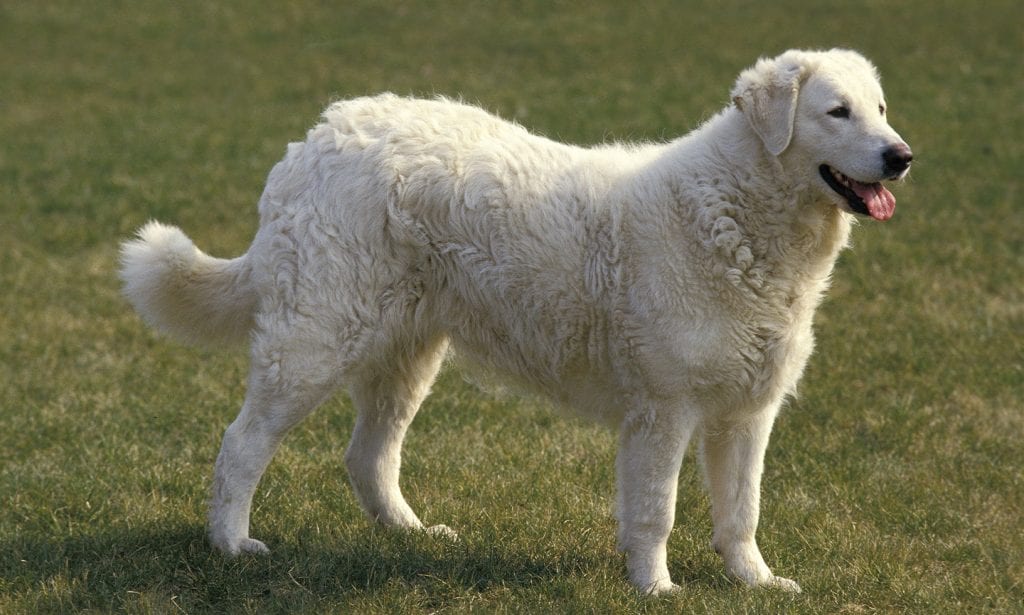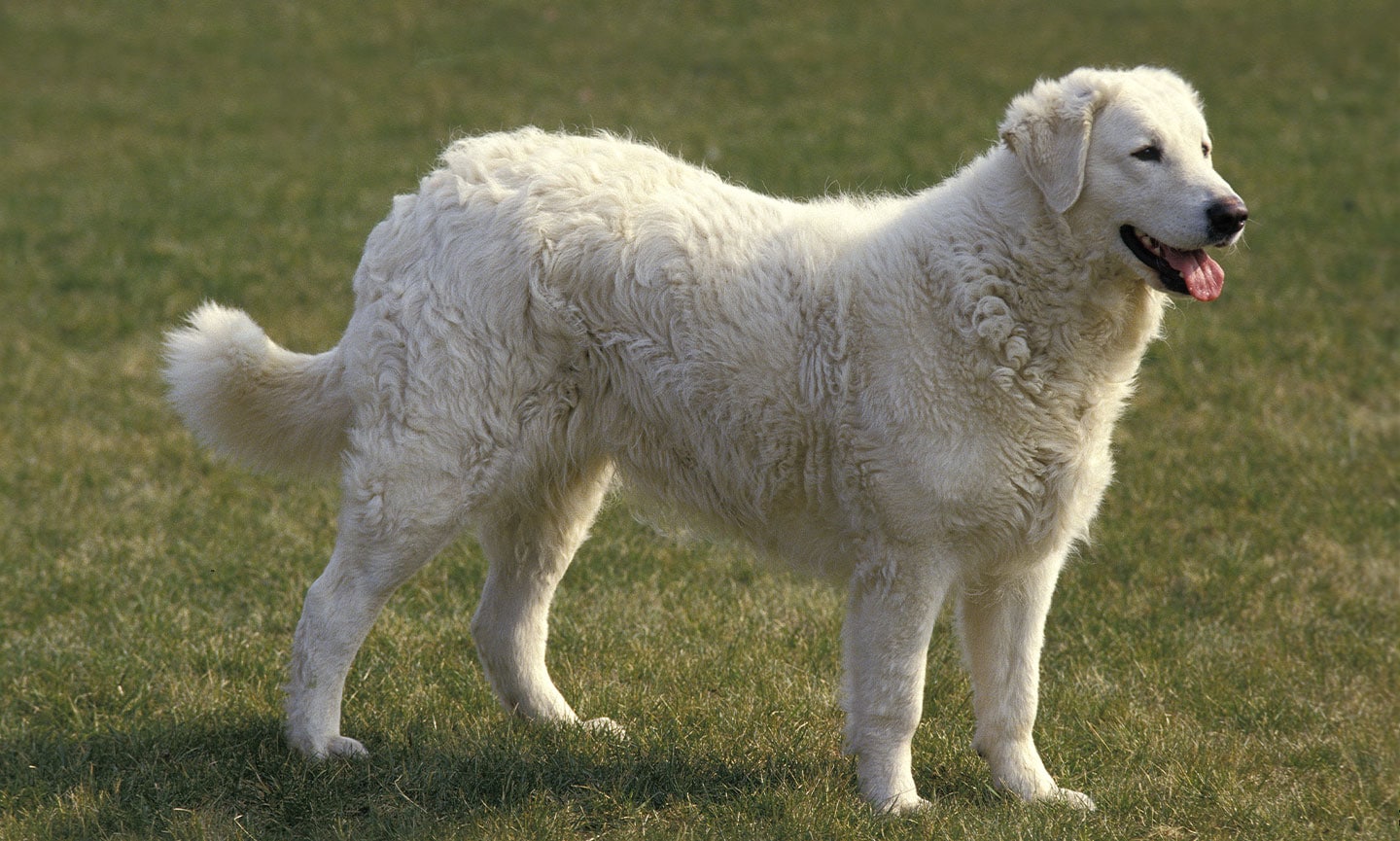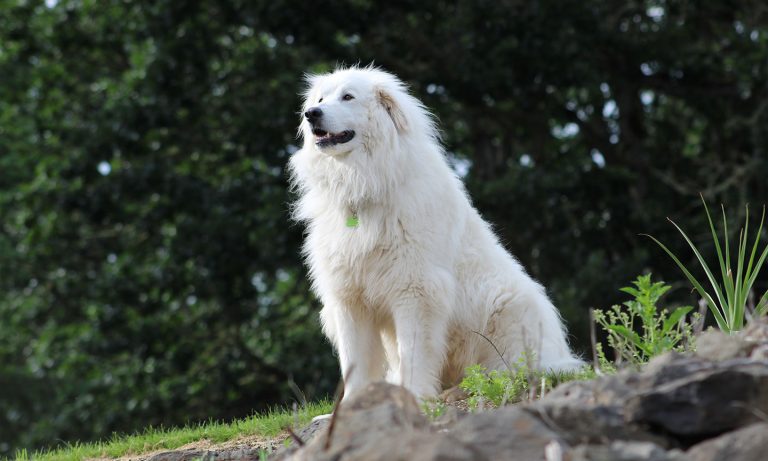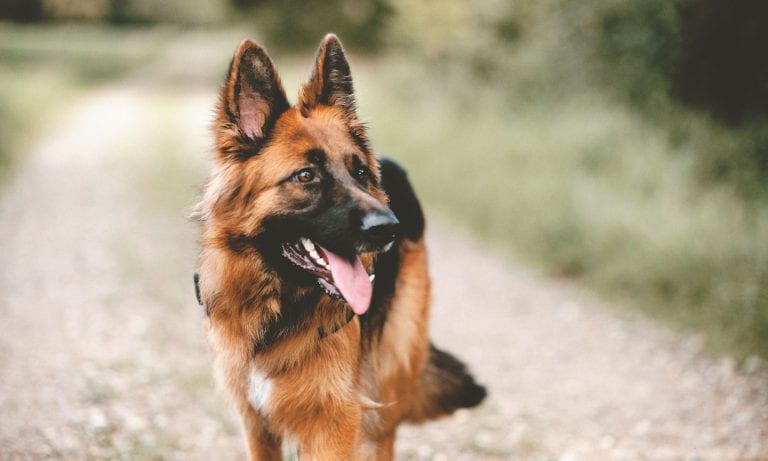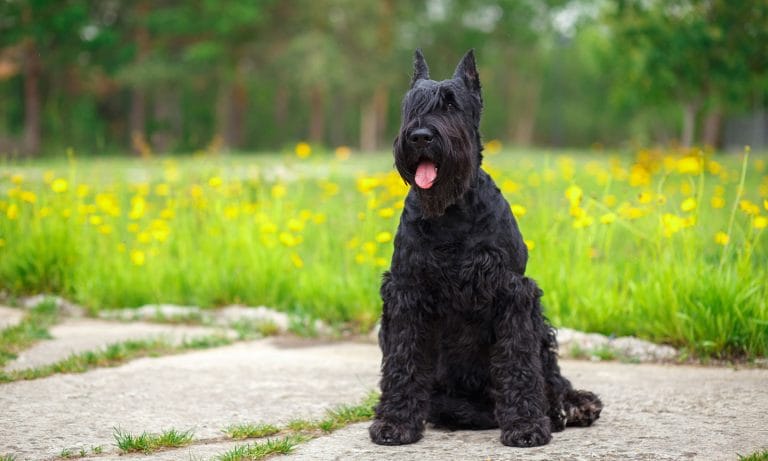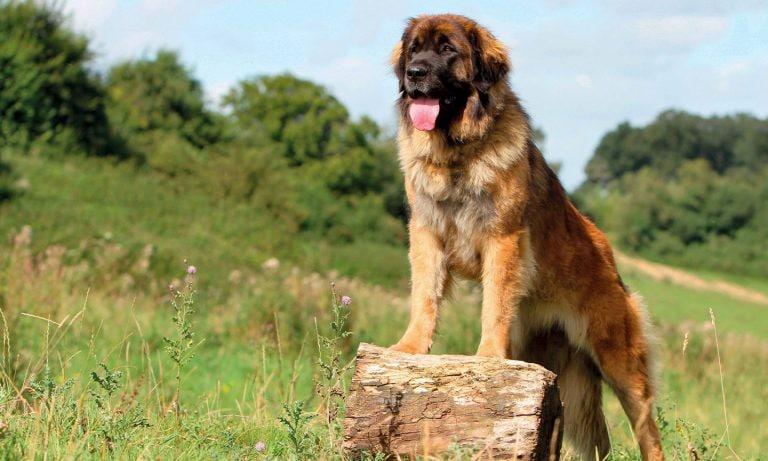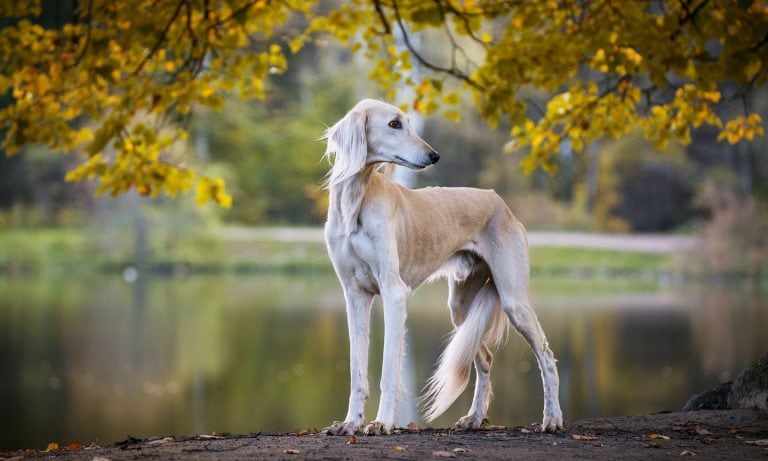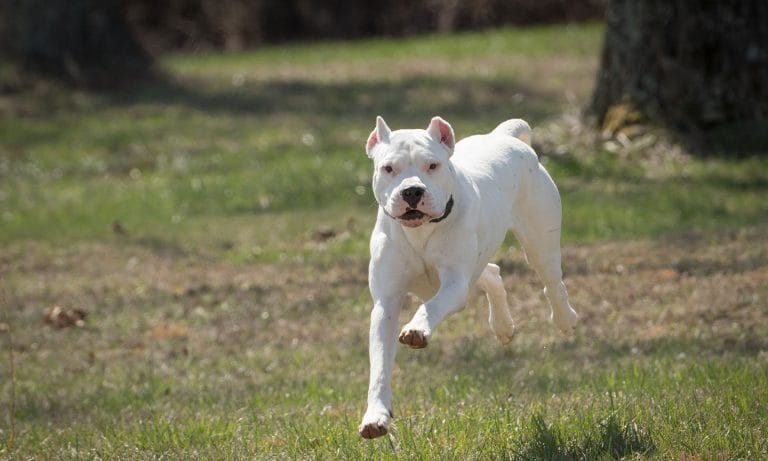Ready to don a cape at a moment’s notice, the Kuvasz is an unassuming canine superhero. Though a large breed, they don’t look intimidating—not with those big grins and fluffy white coats. But underneath that sweet demeanor beats a brave, loyal heart. Sturdy, sleek and muscular, Kuvaszok (that’s the plural term for this breed) are fearless dogs who move with ease and are ready to leap into action at a moment’s notice. So, they may not cozy up to strangers, but they’ll happily cozy up to you any day of the week. Just flash the bat, er, dog signal, and they’ll come running.
Breed Snapshot
Temperament:
BraveBrainyLoyalCoat Color:
White
Best For
Large and muscular, Kuvasz dogs, guarded livestock in Hungary. Today, these thick-coated, intelligent pups thrive as pets as long as they have plenty of fenced-in room to roam and an experienced pet parent skilled in socialization and training.
Kuvasz Temperament
Though they look like big, fluffy teddy bears, the Kuvasz has a robust personality and guarding instinct that makes them a force to be reckoned with. As working dogs, they were bred to guard livestock; today, they may be suspicious of strangers. When confronted with strangers on their property, or if they just have a sense that something’s not quite right, they can be very vocal barkers and, without proper training and socialization, may be reactive in these situations. However, with proper socialization and training, they can learn the difference between friend and foe.
Kuvaszok are extremely smart. How smart? They’ve been known to figure out how to open doors and gates to free not only themselves, but other animals, too. (The ones they like, that is!) They do well with animals they know and like if they’re properly socialized starting in puppyhood.
Kuvaszok do well with kids they know (and who know how to play nicely with dogs), but you always should supervise playtimes. They are large dogs who may accidentally knock children over.
How to Care for a Kuvasz
Kuvaszok are fairly independent, but they can’t take care of themselves! Their double coats and independent streak means you’ll be spending a fair amount of time on their upkeep (translation: you’ll be brushing, training and exercising these pups a lot every day).
Kuvasz Health
Kuvaszok have a life expectancy of 10 to 12 years and are generally a very healthy breed. It’s important for potential pup parents to be aware of conditions they may face, so they can help their pup live the healthiest life possible.
- Bloat/Gastric-Dilatation Volvulus (GDV): Like many large or giant dogs, Kuvaszok can be prone to bloat, which happens when the stomach fills with air and twists on itself. This is a life-threatening emergency. Signs often include excessive drooling, trying to vomit unsuccessfully, a distended belly and pacing. Preventative measures that can sometimes help include avoiding feeding your dog immediately before or after they exercise and feeding them smaller meals throughout the day with a slow feeding bowl.
- Elbow and Hip Dysplasia: Hip and elbow dysplasia are conditions in which the joints don’t fit together properly. Signs include lameness, pain and arthritis. Treatments range from lifestyle changes, like weight reduction, to joint supplements and, in severe cases, surgery.
- Patellar Luxation: Patellar luxation is an often-inherited condition in which the kneecap is able to slip out of place. Signs include limping, pain in the knee, refusing to exercise or swelling at the knee. As with other orthopedic conditions, treatment can range from lifestyle changes, like weight reduction, to surgery in severe cases.
- Cardiac Conditions: Kuvaszok should be screened for congenital cardiac conditions like aortic stenosis, which can cause heart murmurs. Their treatment options depend on the diagnosis.
- Progressive Retinal Atrophy (PRA): PRA can be an inherited condition in Kuvasz, affecting their vision, often starting with night blindness. While there is no cure, genetic screening testing is available.
- Hypothyroidism: Hypothyroidism can be caused in Kuvaszok by when the immune system attacks the thyroid (autoimmune thyroiditis). Hypothyroidism is when the thyroid doesn’t produce enough hormone.Treatment is typically a daily thyroid supplement.
Kuvasz History
The Kuvasz has been quite the jet-setter over the centuries, making their way from Tibet, where they’re believed to have originated, to Turkey, where they got their name. Next, the Kuvasz traveled to Hungary, where they were originally bred and known for their stellar ability to guard livestock. The breed won high praise from nobility for their loyalty. King Matthias, who ruled Hungary in the 15th century, was actually said to trust his Kuvasz pack more than the people around him.
The Kuvasz first came to the US in the 1920s, and the American Kennel Club recognized the dog in 1931. Sadly, during World War II, the Kuvasz population in Hungary dropped dramatically, but breeders eventually brought the breed back from the brink.
So, where is the best place to find Kuvasz puppies? You can find a list of reputable breeders on the American Kennel Club’s website. What’s the average price for a Kuvasz? Depending on the breeder, expect to spend anywhere from $1,300 to $2,500 for a pup. But for that, you usually get a dog who’s been screened for temperament and health issues and may come with pedigree papers. You can also reach out to local Kuvasz rescue organizations to adopt one or keep an eye out for the breed at your local animal shelter. Search Chewy’s database of adoptable dogs in your area.
FAQs
Do Kuvasz dogs shed?
Yes, the Kuvasz sheds a lot. They have thick double coats and shed profusely in the spring and fall. They’re not hypoallergenic, so they may set off allergies.
How do you pronounce Kuvasz?
Kuvasz is pronounced KOO-vahz.
Is a Kuvasz a good family dog?
A Kuvasz can be a very good and loyal family dog if they’re properly socialized with your kids from a young age. It’s also important to teach children how to respectfully play with dogs, and include your pup in everyday activities around the home, so they become familiar with every member of the family as well.
Do Kuvasz have double dewclaws?
No, Kuvaszok do not have double dewclaws, unlike breeds like the Great Pyrenees.
What are the most common Kuvasz mixes?
Some of the most common Kuvasz mixes are:
- Kuvasz-Labrador Retriever mix
- Kuvasz-Chow Chow mix (Chuvasz)
- Kuvasz-Poodle mix
- Kuvasz-Great Pyrenees mix
- Kuvasz-Border Collie mix
- Kuvasz-Husky mix
- Kuvasz-Golden Retriever mix
Note: These are not purebred dogs but mixed breeds.
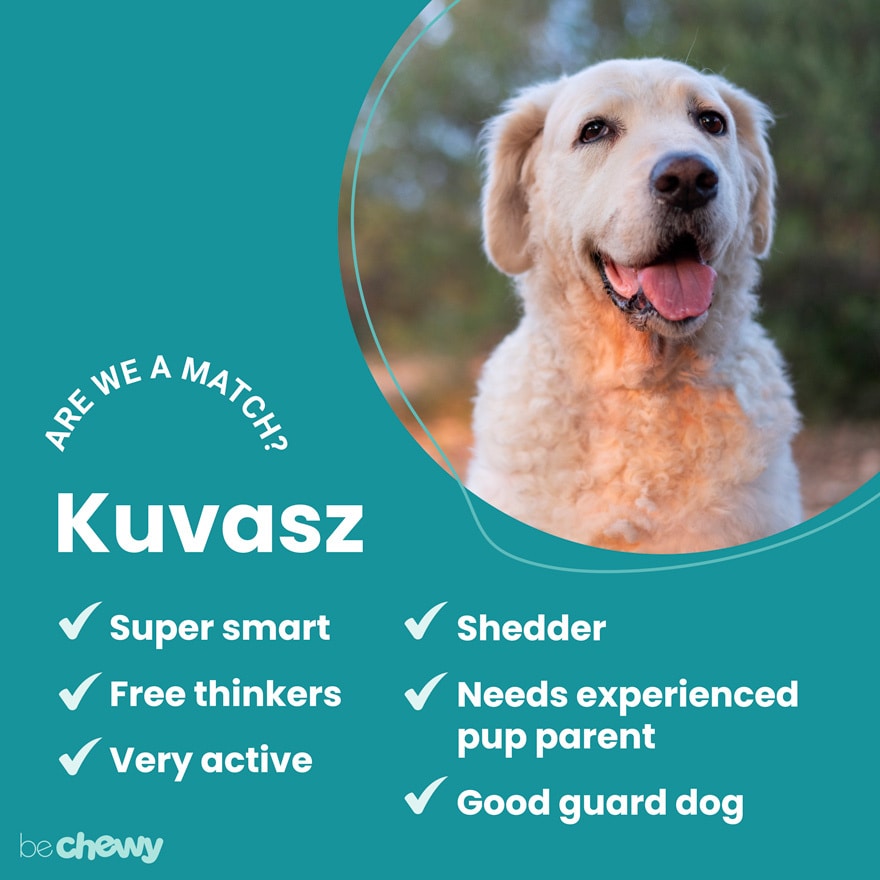
Top Takeaways
Kuvaszok are super-protective of and loyal to their families, making them great guard dogs. They’re not city dogs and need to be able to get daily exercise on their own in big fenced-in yards. If you can handle a giant, active and speedy dog (and find frequent shedding endearing), then the Kuvasz is destined to be your perfect canine companion.
Expert input provided by Gary Edwards, DVM, Gateway Animal Hospital, Darryl L. Millis, MS, DVM, DACVS, CCRP, VCA Regional Institute for Vet Emergencies and Referrals and professor of orthopedic surgery, Department of Small Animal Clinical Sciences, College of Veterinary Medicine, The University of Tennessee, Knoxville, and certified dog trainer Lynn Roberts, CCPDT-KA, owner of Aegys Kennels.
Breed characteristic ratings provided by veterinarian Dr. Sarah J. Wooten, DVM, CVJ, a veterinarian at Sheep Draw Veterinary Hospital in Greeley, Colorado; dog trainer and behavior consultant Irith Bloom, CPDT-KSA, CBCC-KA, CDBC, owner of The Sophisticated Dog, LLC, in Los Angeles; and certified animal behavior consultant Amy Shojai, CABC, in Sherman, Texas.
The health content was medically reviewed by Chewy vets.
Photo credit for “How do I look?” AnimalPlanet.com.

Search for Adoptable Kuvaszs Near You
Female Names
- Mei
- Toffee
- Kiva
- Emmi
- Shiva
- Tayga
- Aoife
- Cypher
- Maggie
- Lulu
Male Names
- Jax
- Paci
- Hades
- Comet
- Oslo
- Gus
- Tucker
- Koda
- Max
- Ghost
Share:
